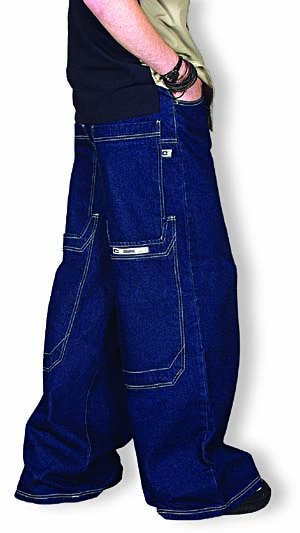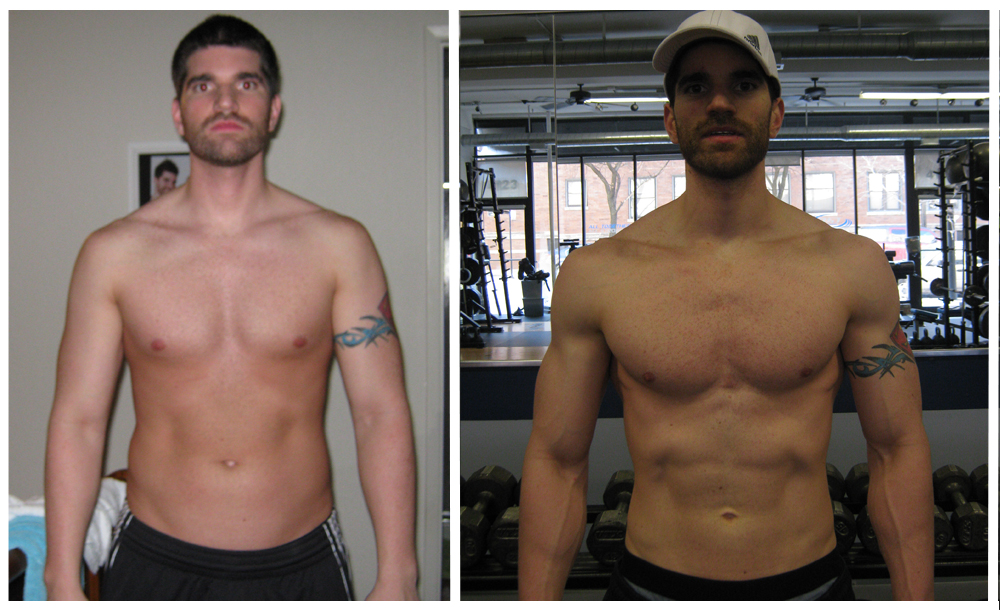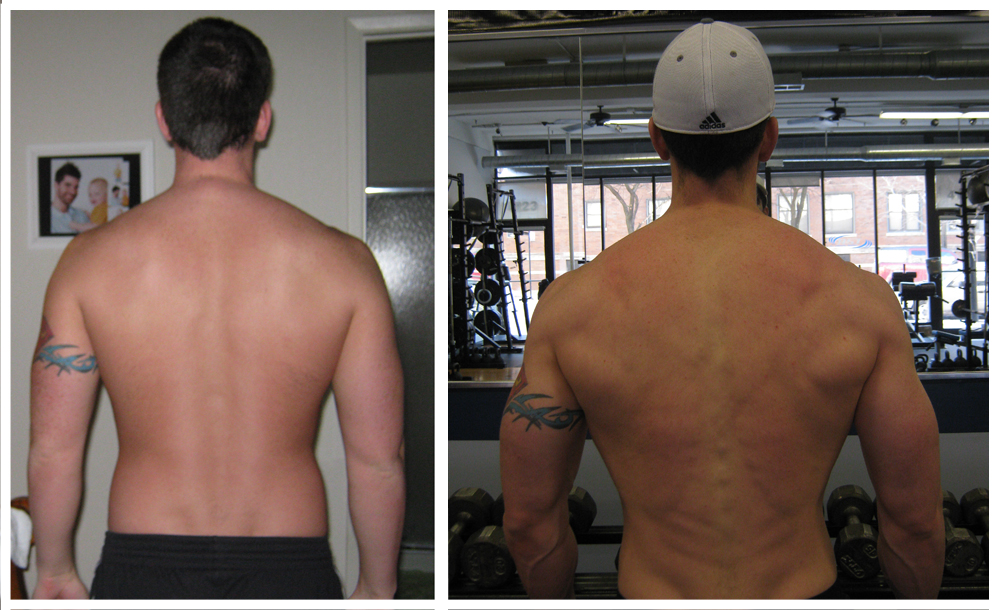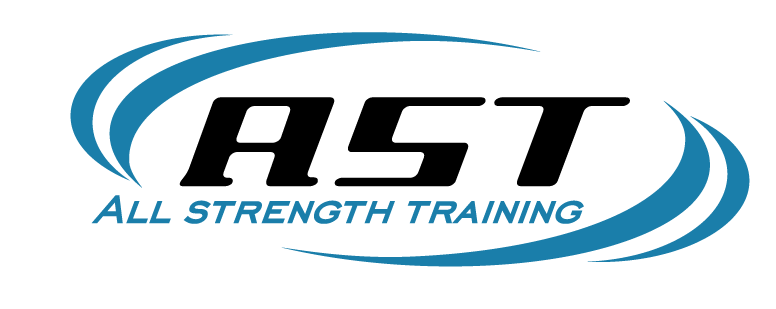Then Vs. Now: Two Different Approaches to Muscle Gain
As long as I have been training with weights (since I turned 14 years old, so over 15 years now), my biggest priority has been increasing muscle mass. The first day I spent in the weight room, I was 5’7″ and 108lbs, and got stuck trying to bench press an empty Olympic barbell. Unfortunately, this was also during a period in the 90’s when the “skater look” (baggy pants with oversized leg openings, two-sizes-too-large t-shirts, and wallets with chains attached to them) was popular, which made my frame (or lack of one) even worse.

So that very same day, after getting stapled under that bar, I went to Waldenbooks and bought my first Muscle & Fitness magazine, that had nothing but the abs of a very ripped male and female on the front cover, and I devoured every bit of information I could find in that magazine, as well as countless other issues over the next 5 years. In fact, from 1997 to 2003, almost all of my knowledge about training was pulled from issues of Muscle & Fitness, Flex Magazine, MuscleMag, and whatever else I could find, as well as the “Bible of bodybuilding,” Arnold Schwarzenegger’s The New Encyclopedia of Modern Bodybuilding.

And it worked well enough – in the first year of training I went from 108lbs to 132lbs and actually had something other than bone where my pecs should be for the first time ever. Now, though, looking back, the simple process of puberty would probably have been enough to add at least 15 or 20lbs. So whether or not it really “worked” is actually up for debate.
Over the next handful of years I went up to almost 185lbs, but in clothing never really looked like I worked out, and the best term for my physique would still be “skinny-fat.” Even though I followed all of the “rules” those magazines told me to – I trained every body part once a week using all of the routines that the pros said they used, and ate exactly what the magazines said to eat – chicken, canned tuna, oatmeal, potatoes, pasta, and I drank a gallon of whole milk a day for over a year straight. But I still had no abs, and still didn’t look like I worked out.
So I gave up on bodybuilding for a while and blamed my “bad genetics,” and tried to focus more on powerlifting, where it’s okay and even beneficial to carry extra fat, where cardio is a four-letter word, but even then I struggled to make progress. My strength level probably wouldn’t put me in the top 500 in my weight class nationally, and the fat just kept accumulating.
Then, in early 2010, I was introduced to BioSignature Modulation and Charles Poliquin. I had read a lot of Charles’ writing on T-Nation.com, but had never really taken anything to heart and just figured that, while I was very good at getting all of my clients in shape, I would just play the “genetics” card whenever it came to my own appearance.
Over the next several years, I began to understand that blaming what my parents gave me (or didn’t give me) was just a cop-out, and that instead of blaming my genes, I should be embracing them. Carbs make me fat? Then get rid of them. The first time I met Charles in person, he told me, “for the next six months, the closest you should get to carbs of any kind is through photographs.” For a few months, I scoffed at the idea, and continued to plug away. Eventually, I started removing things like dairy and gluten, but still didn’t shy from fruit or rice, and my post-workout shake still had about 40 grams of protein and 150 grams of carbs. I looked a little better, but nothing dramatic, and stayed around 15-16% bodyfat on average.
Then, I made a decision to go “all-in” on Charles’ recommendations for somebody with my body type, which include:
- High protein and vegetable intake (most days over 200g of protein and 1lb of veggies or more)
- Low-carb/no-carb with the exception of a weekly cheat meal
- Using basic supplements like a multi, fish oil, HCL, D3, zinc and magnesium to fill in nutritional deficiencies
- Ditch classic bodybuilding splits for frequent but short full-body training sessions with big movements
- Use insulin-regulating supplements such as Insulinomics, Fenuplex and Glucose Disposal
The changes were very immediate. The first time I did the 14-day low carb boot camp I lost 3.8% bodyfat and gained 6lbs of lean mass. Of course, after about a month, I started allowing a few carbs back in (although much less than before) and increased my cheat meal frequency from once a week to twice a week. However, I was still able to maintain at right around 12% bodyfat (as opposed to the 16% I had been prior) with relatively little effort.
Now, to coincide with AST’s 2012 Ultimate Challenge, I am working toward 4% bodyfat for a photo shoot we’re doing at the gym in mid-April, and am staying very low-carb/no-carb throughout, based on Poliquin’s original recommendations. In the first month, I dropped over 3% bodyfat and gained 12lbs of lean mass. While I can count on one hand the number of carbs I’ve had since the beginning of January, I have done no cardio other than what my training sessions provide.


The point? Perhaps instead of blaming your genetics, it’s time to embrace them and defy convention.

Great success story. Arnold’s book is one of the first things that I read too. It’s such a great book. I think there always things that need to be tweaked for individual results but once we figure them out, all that hard work pays off.